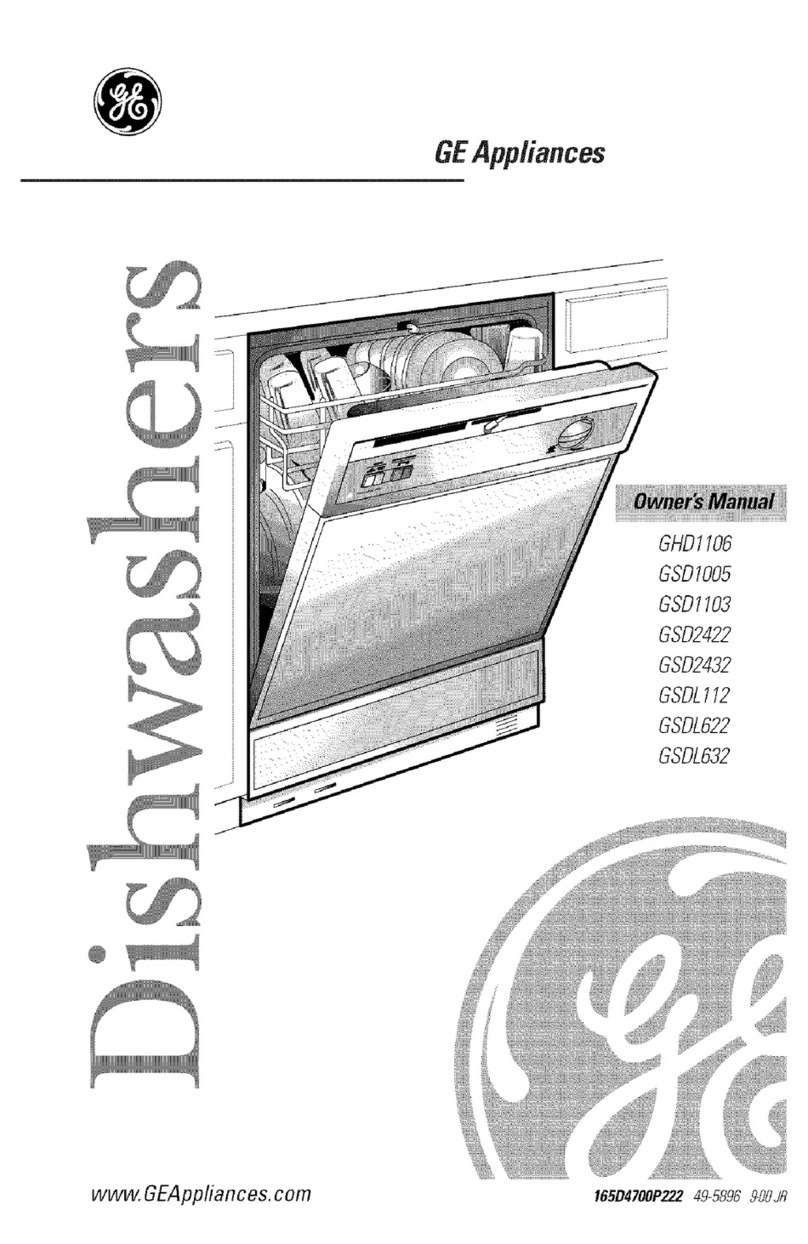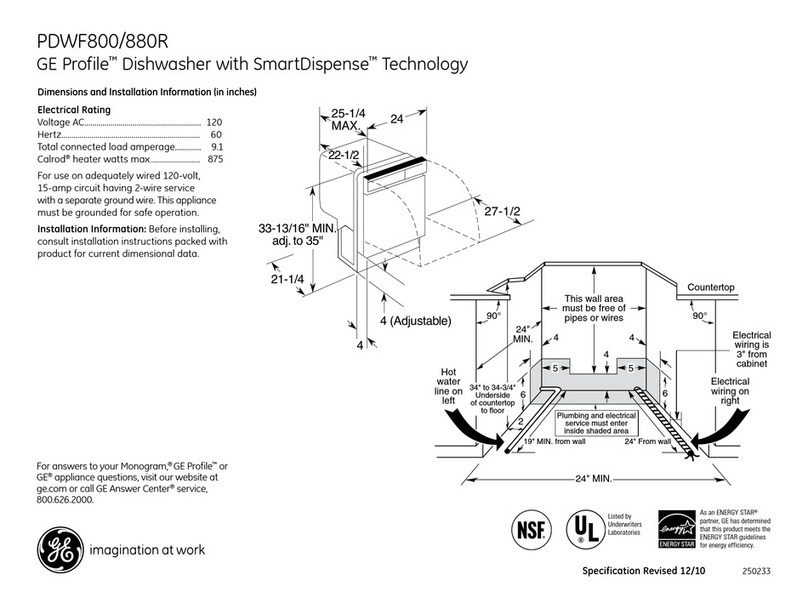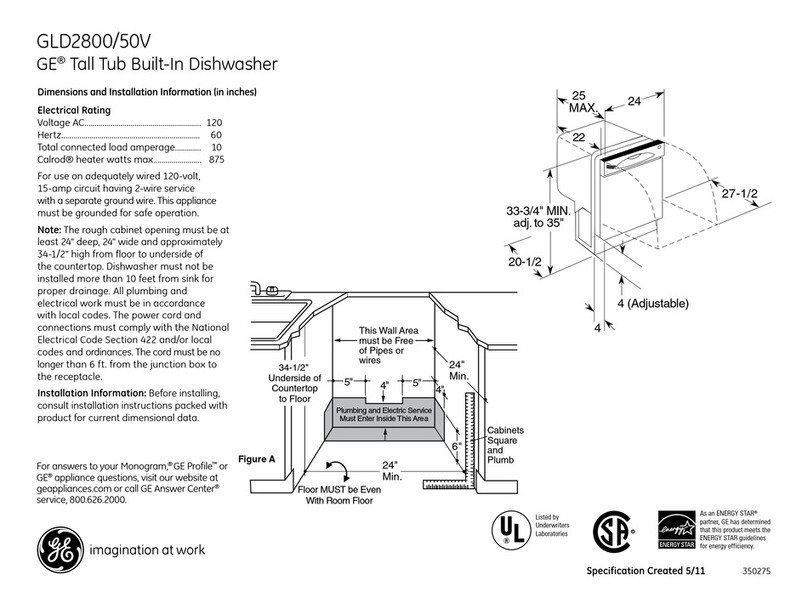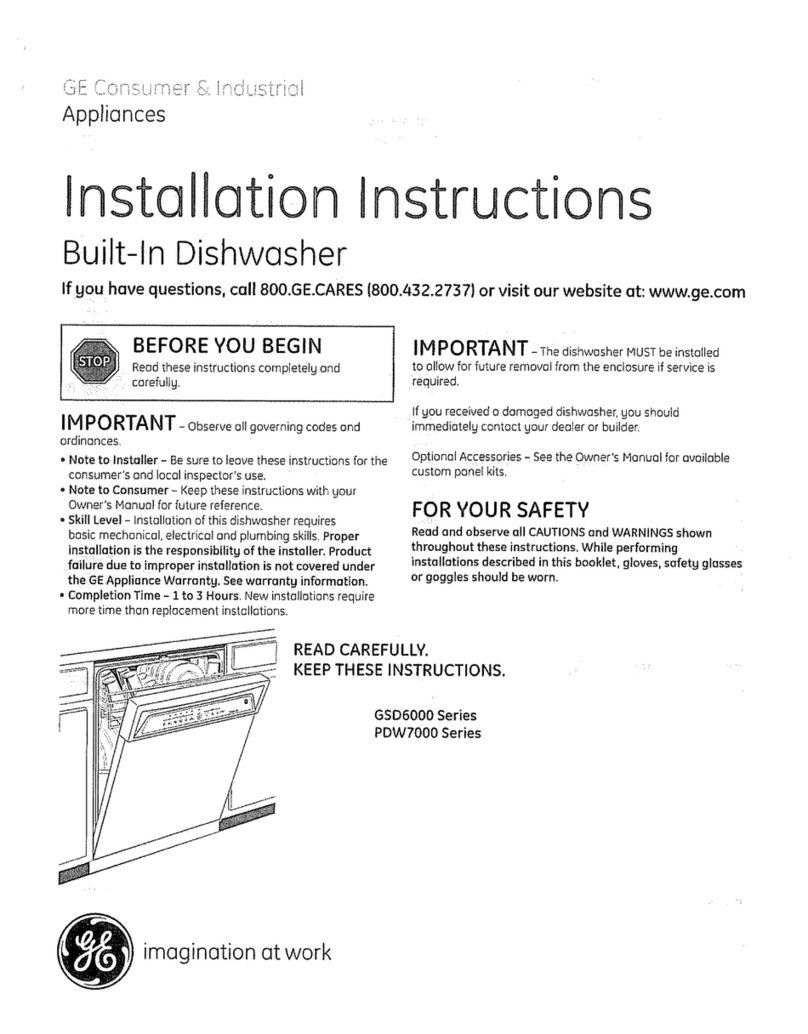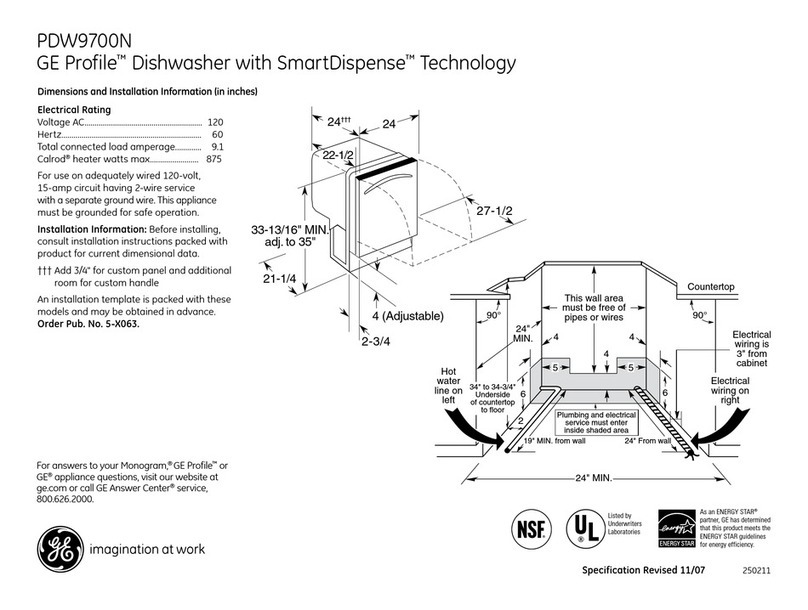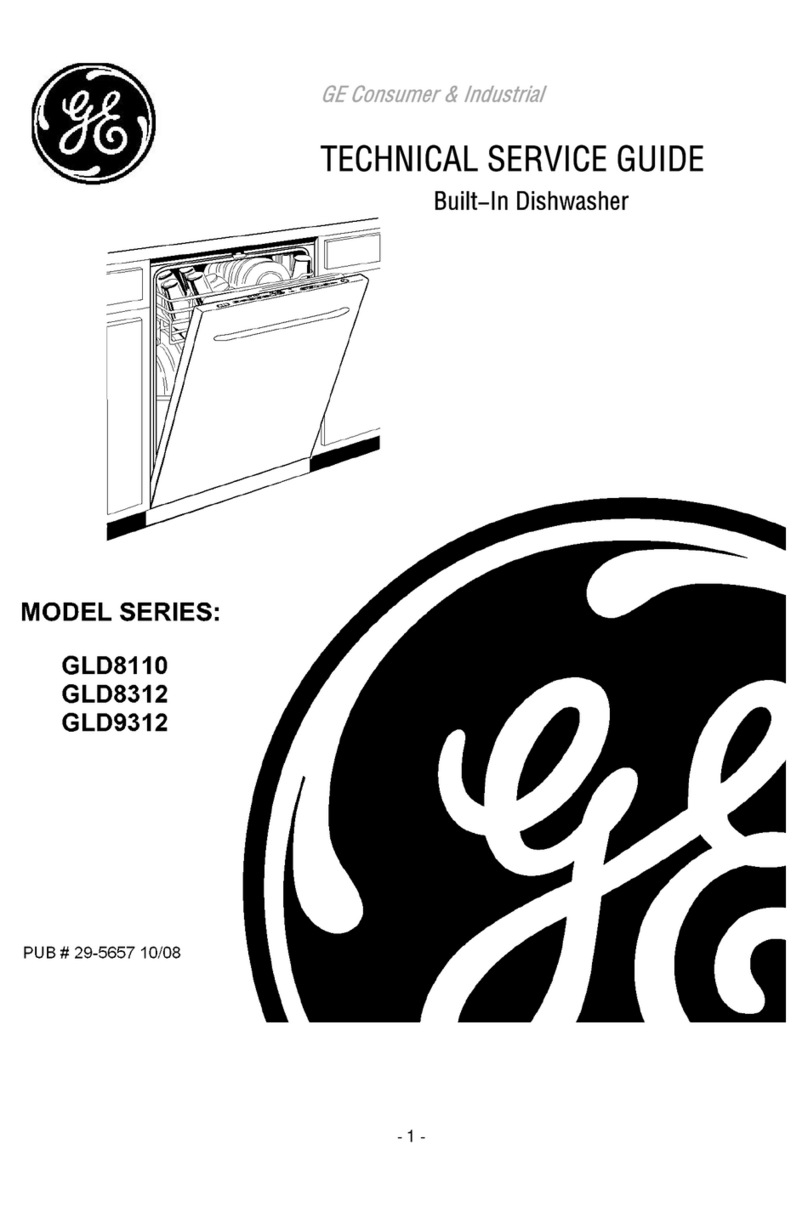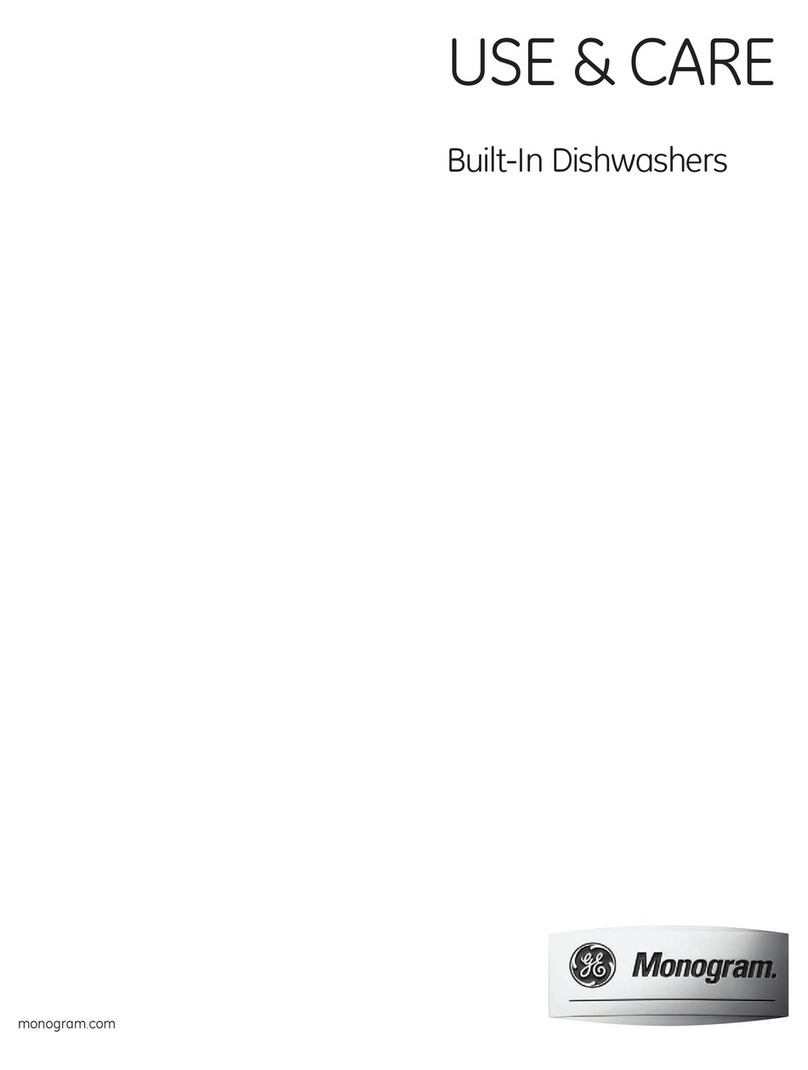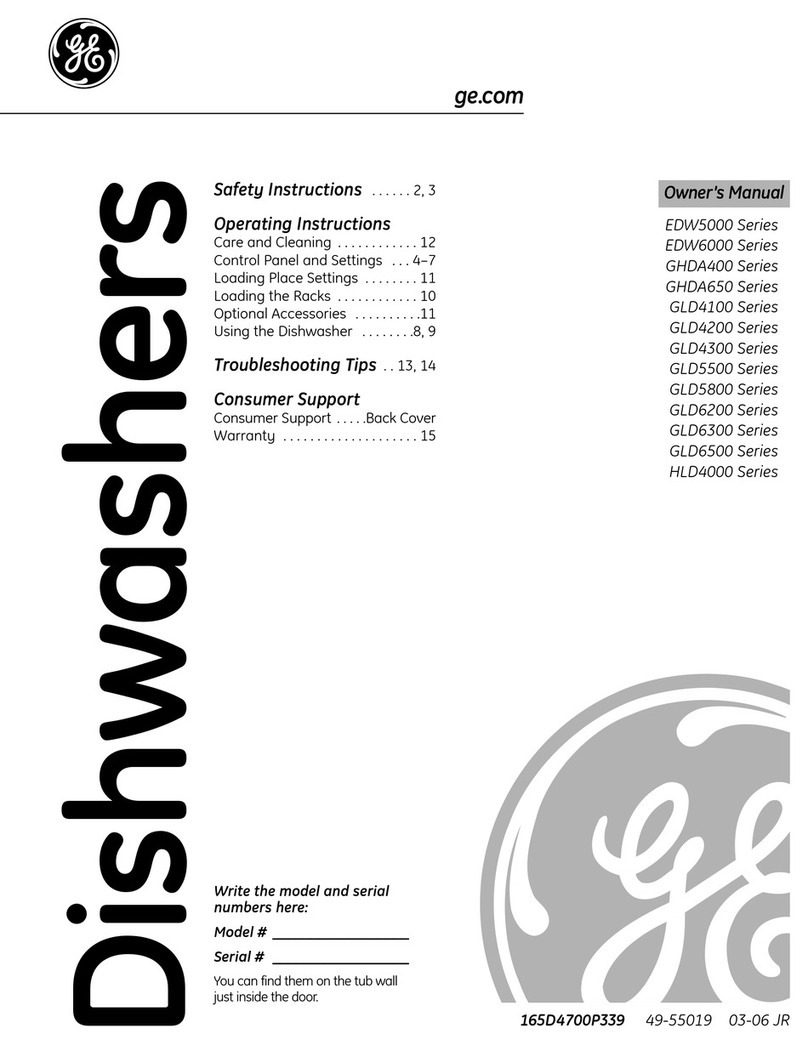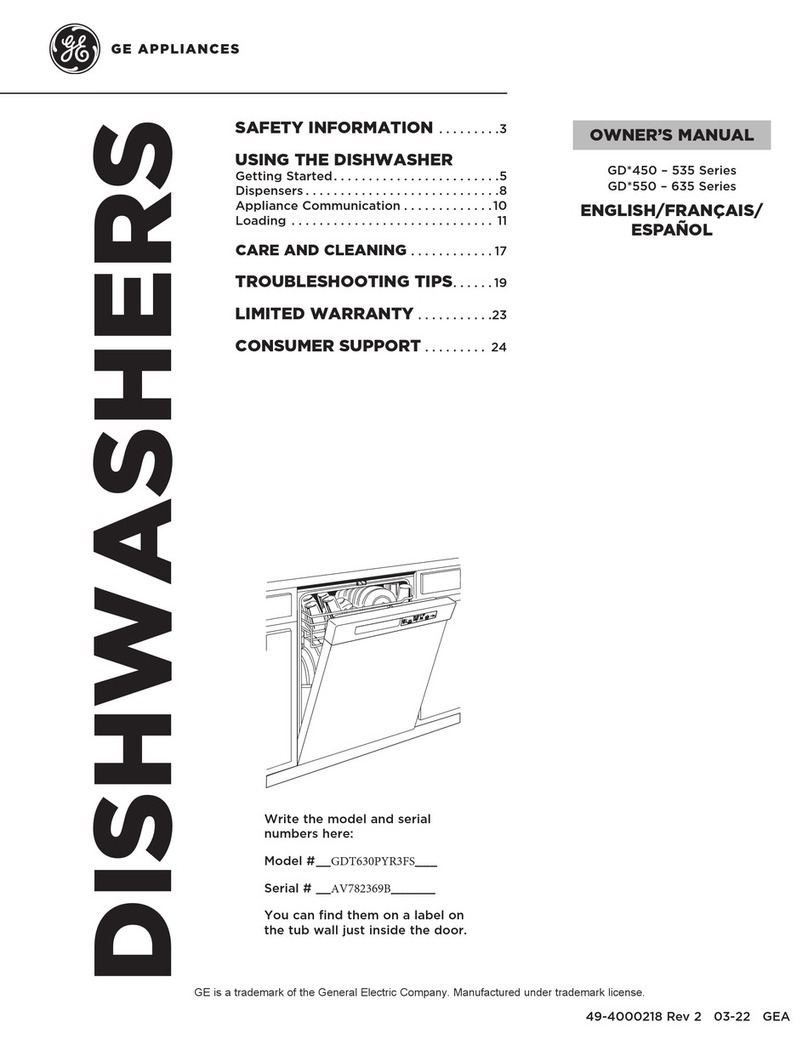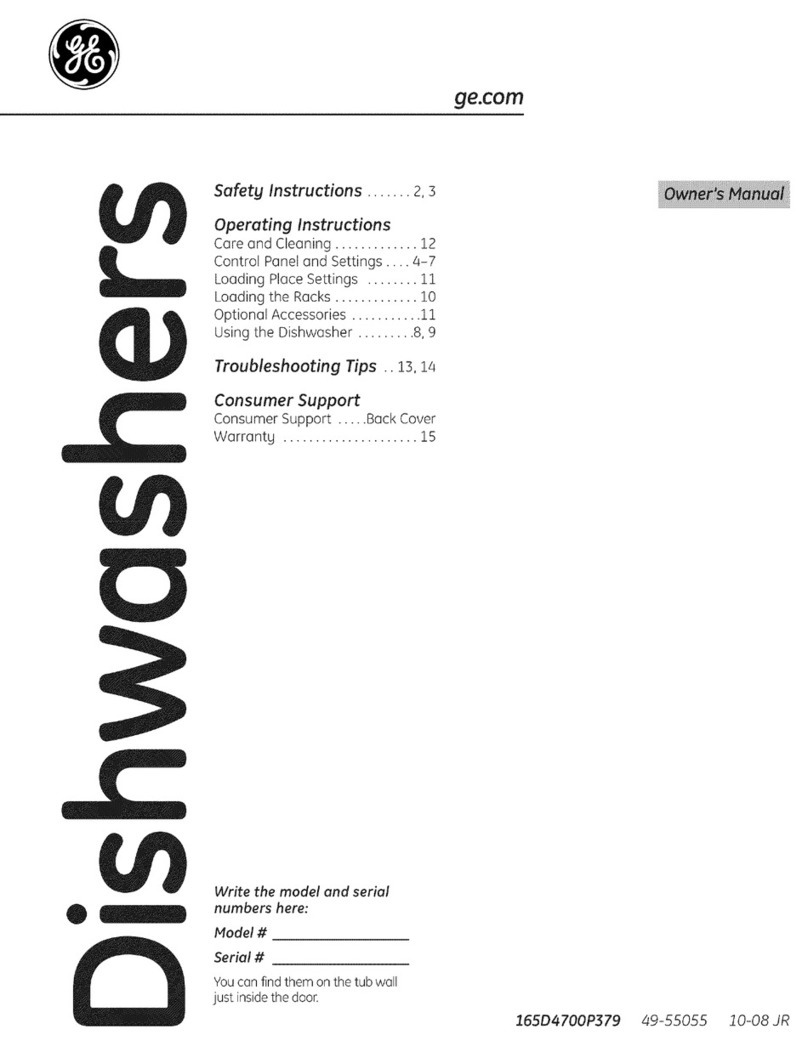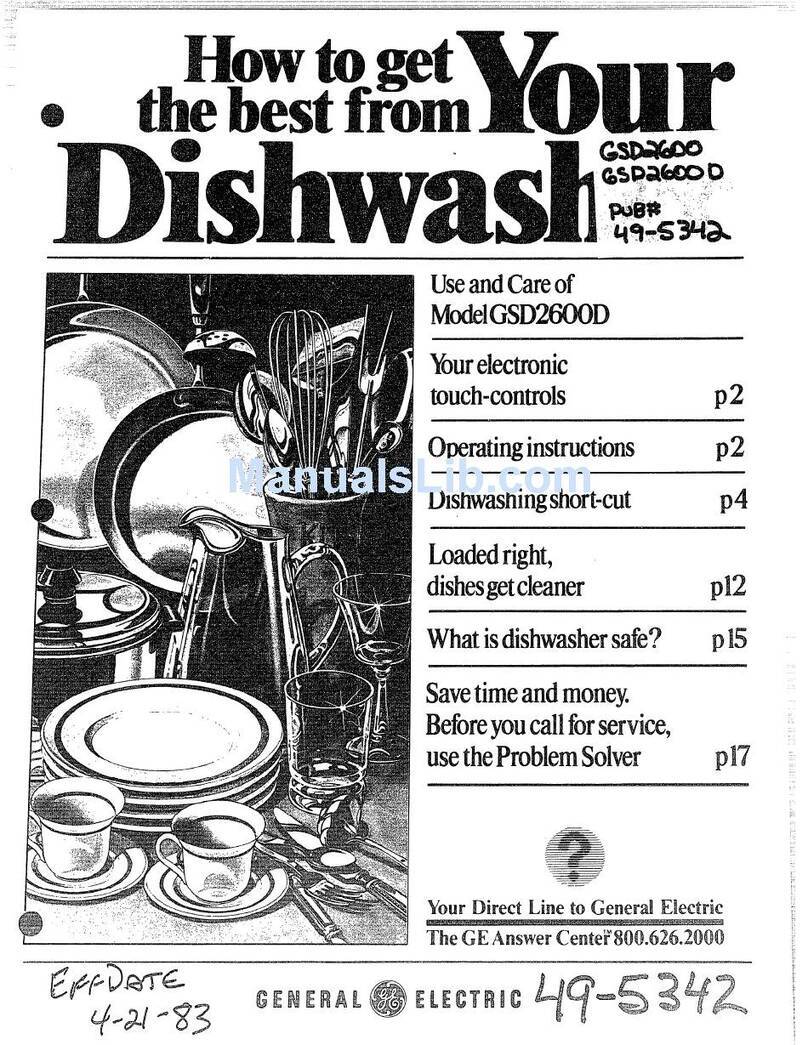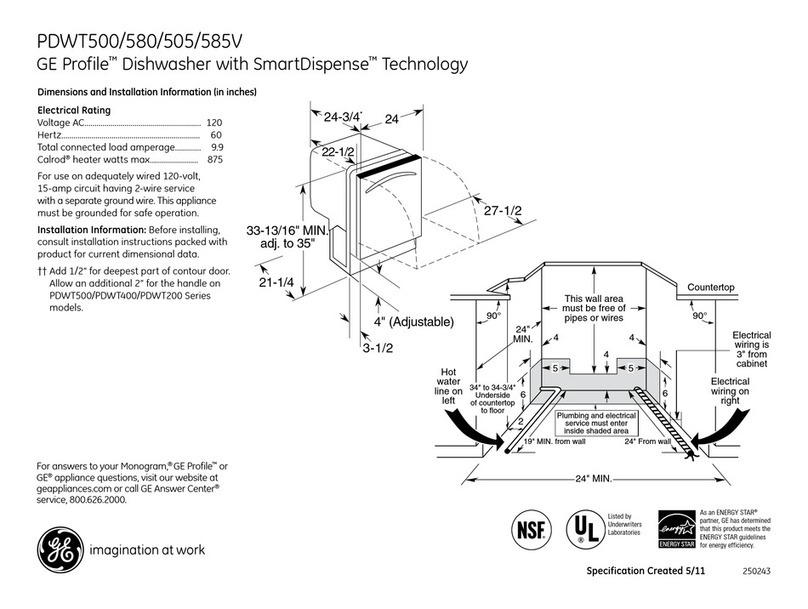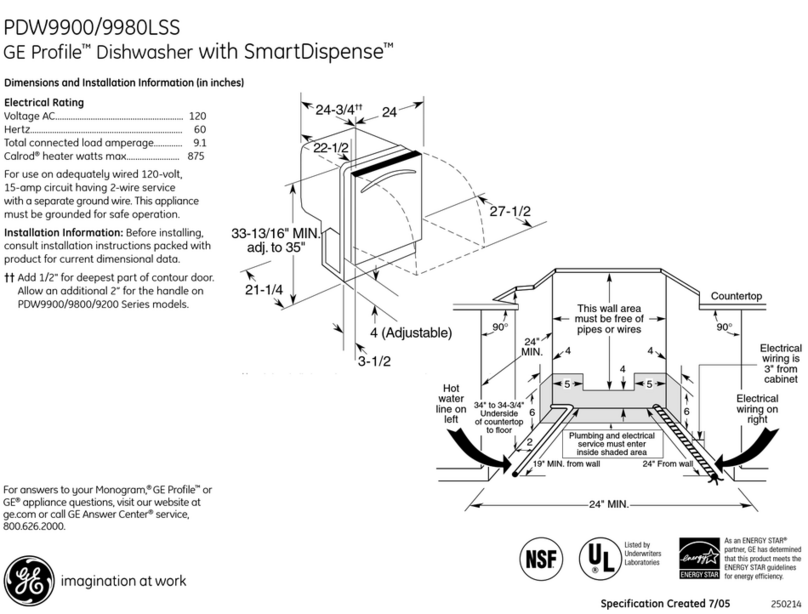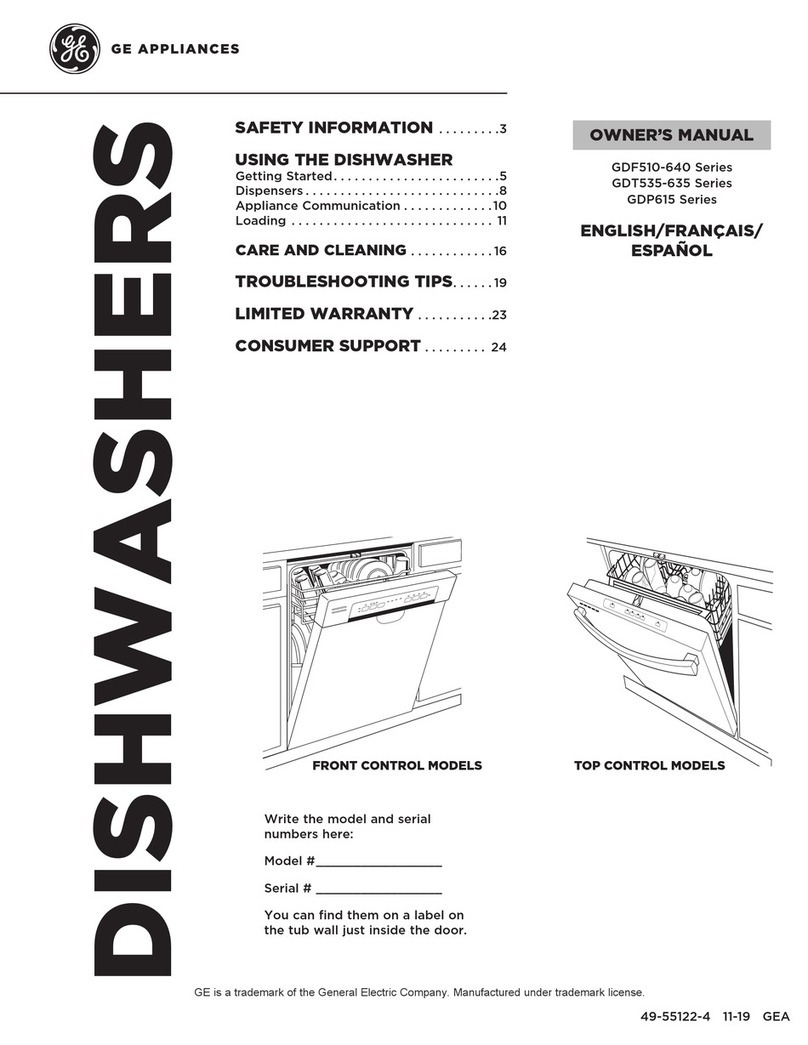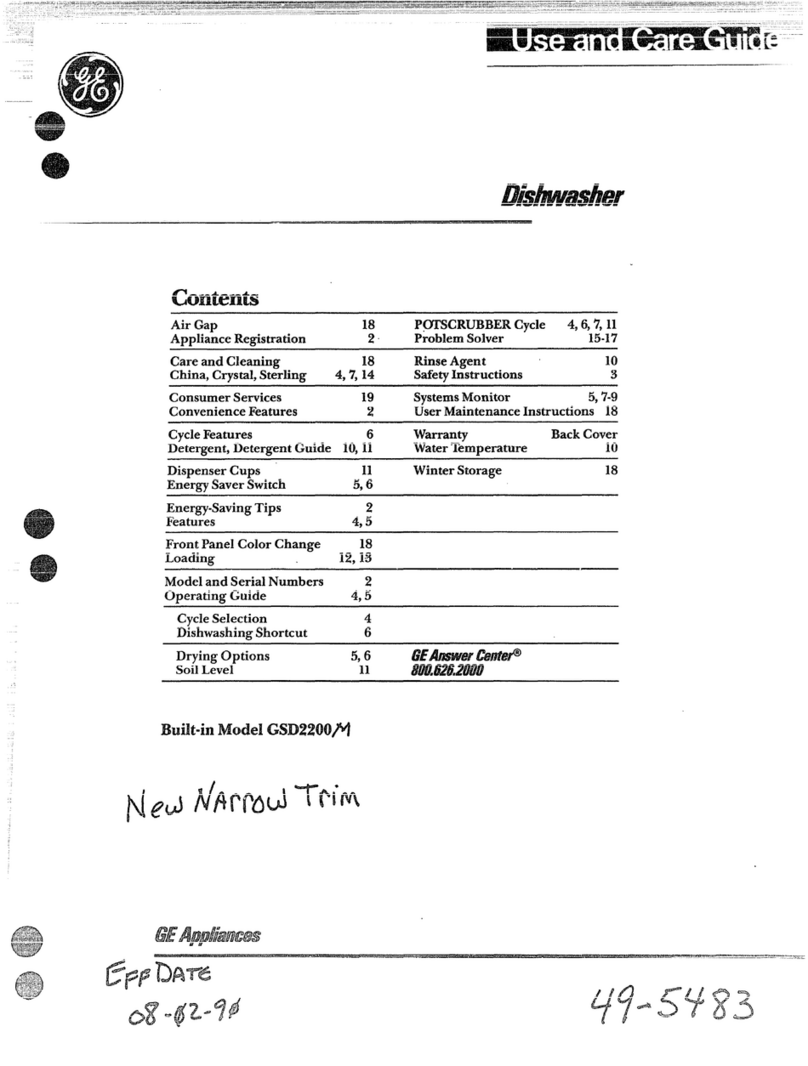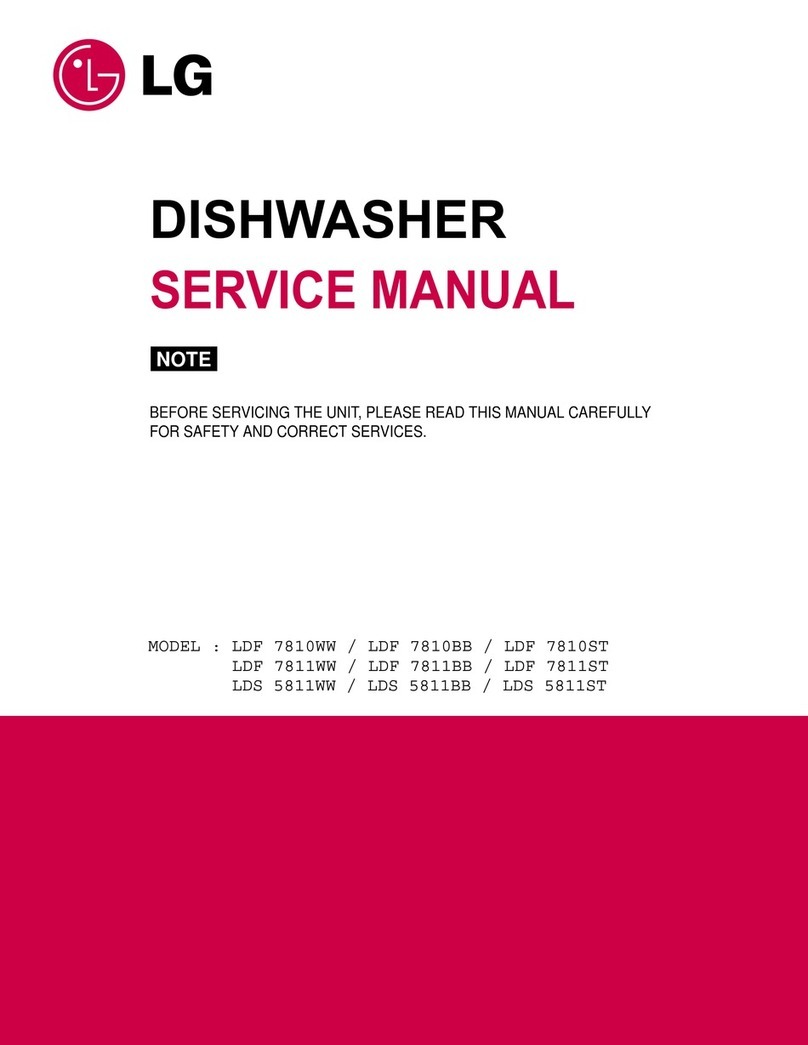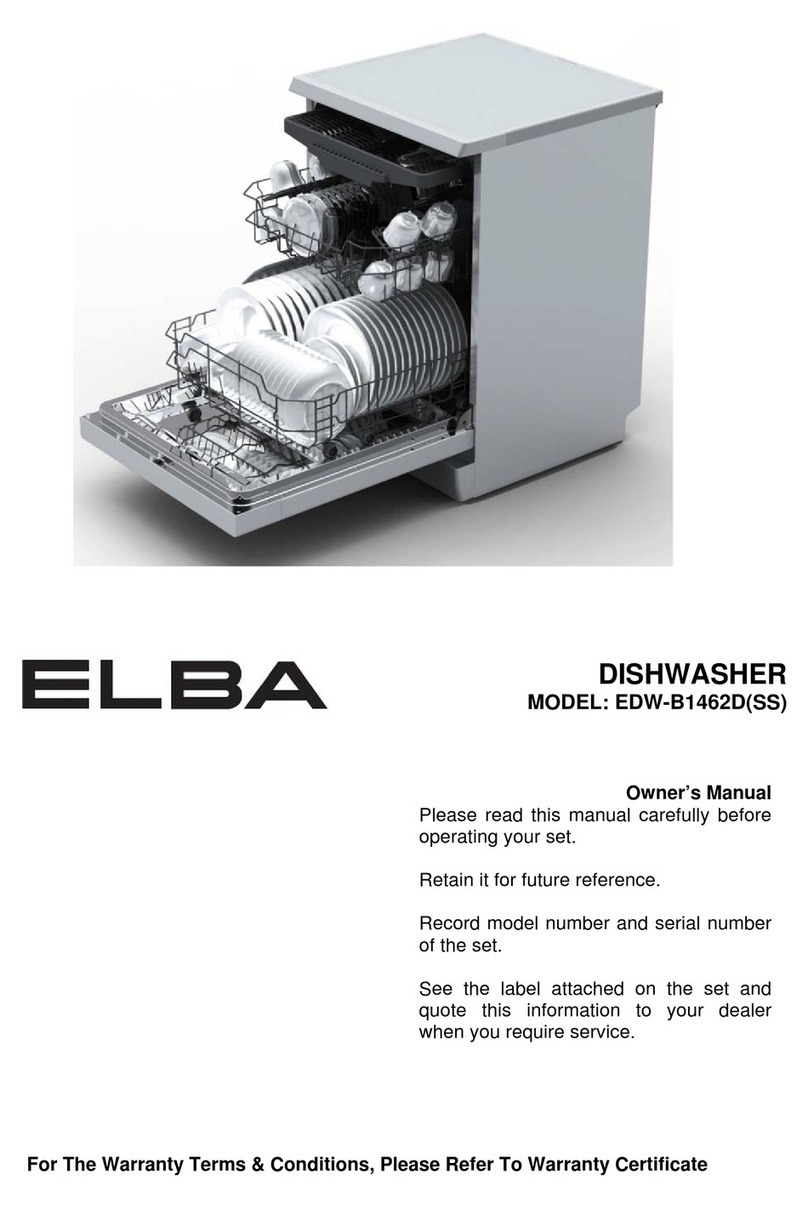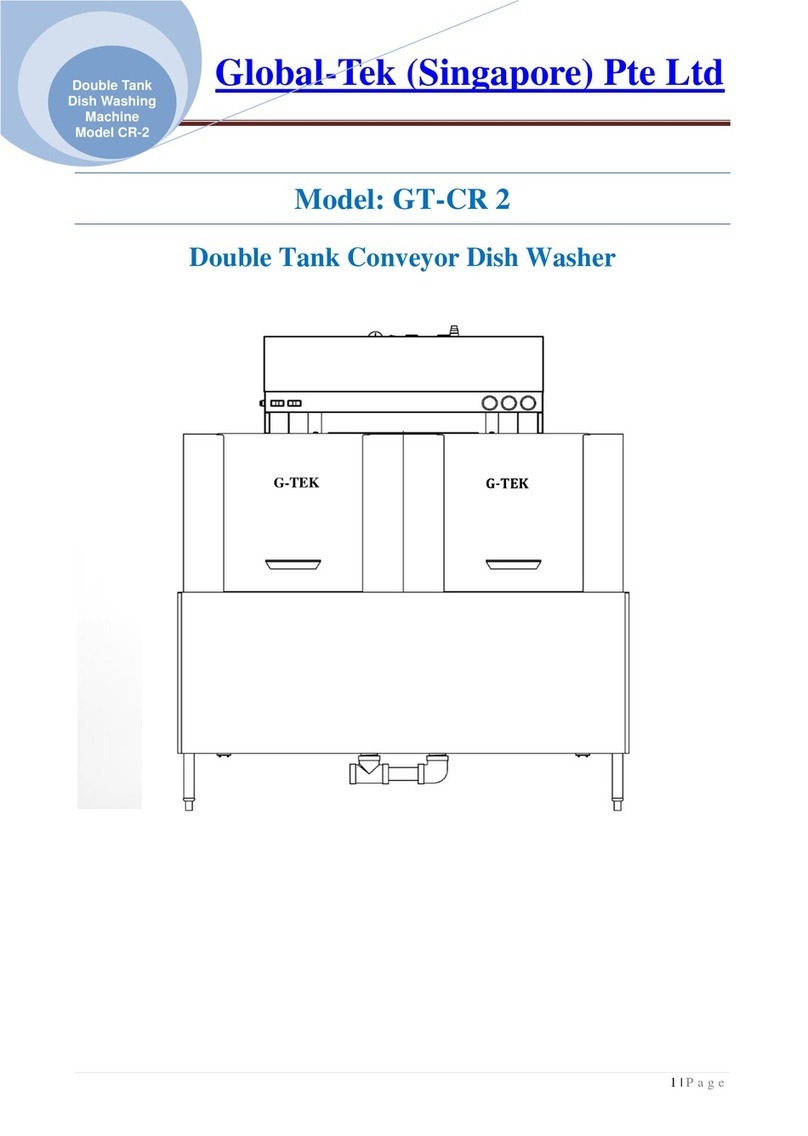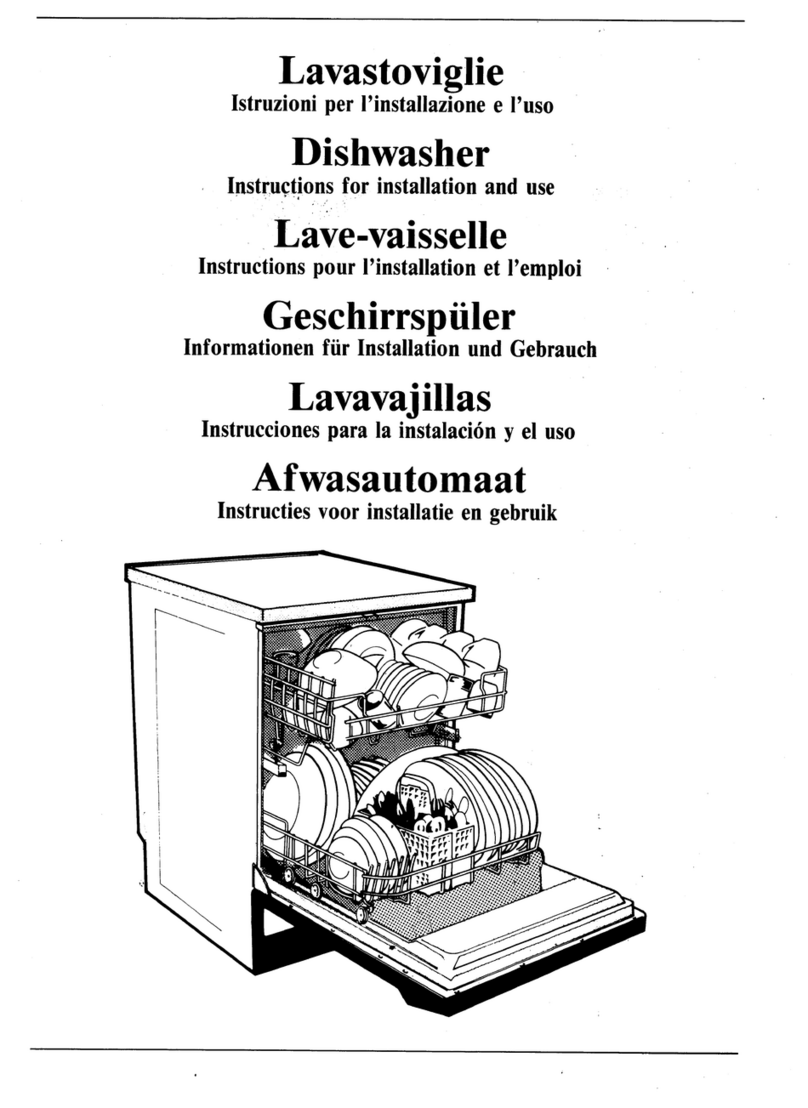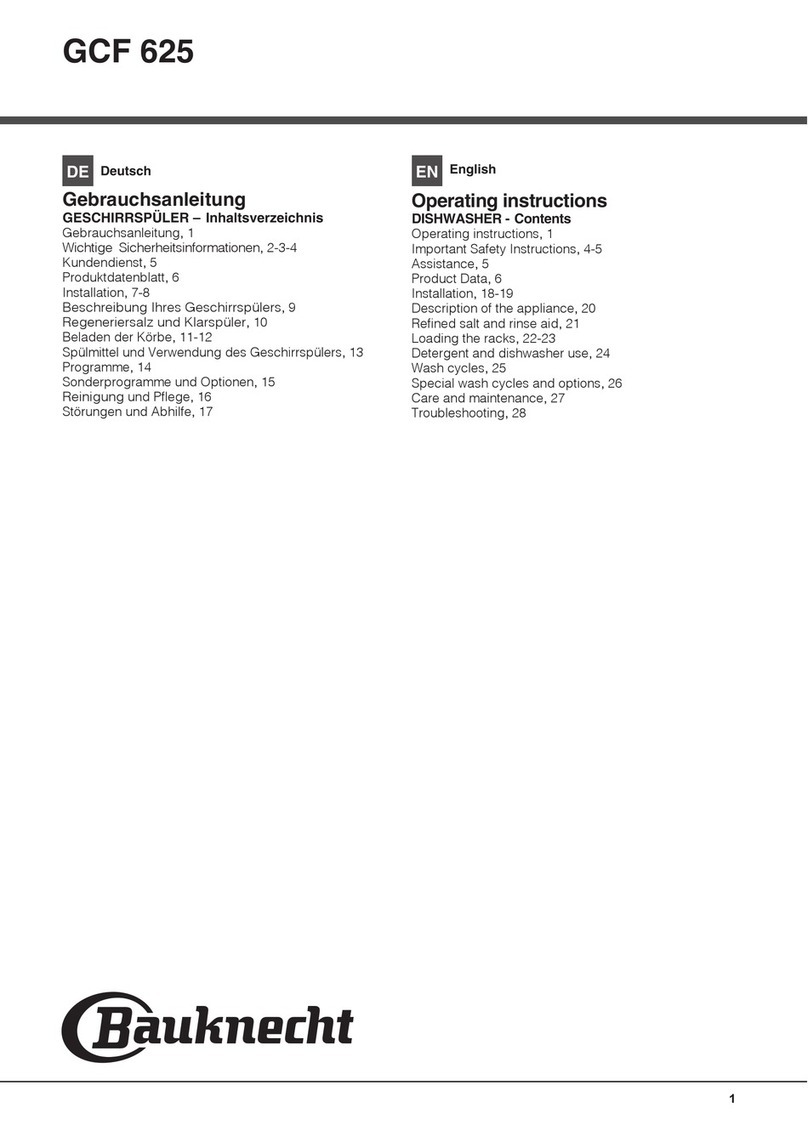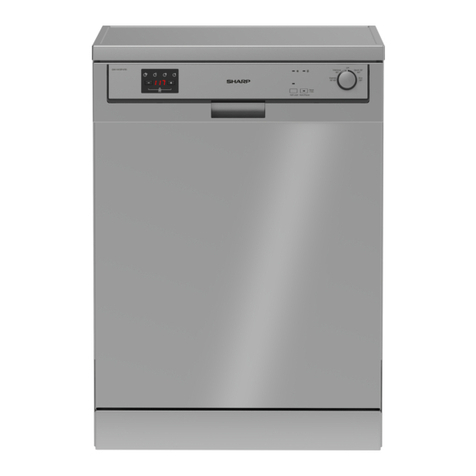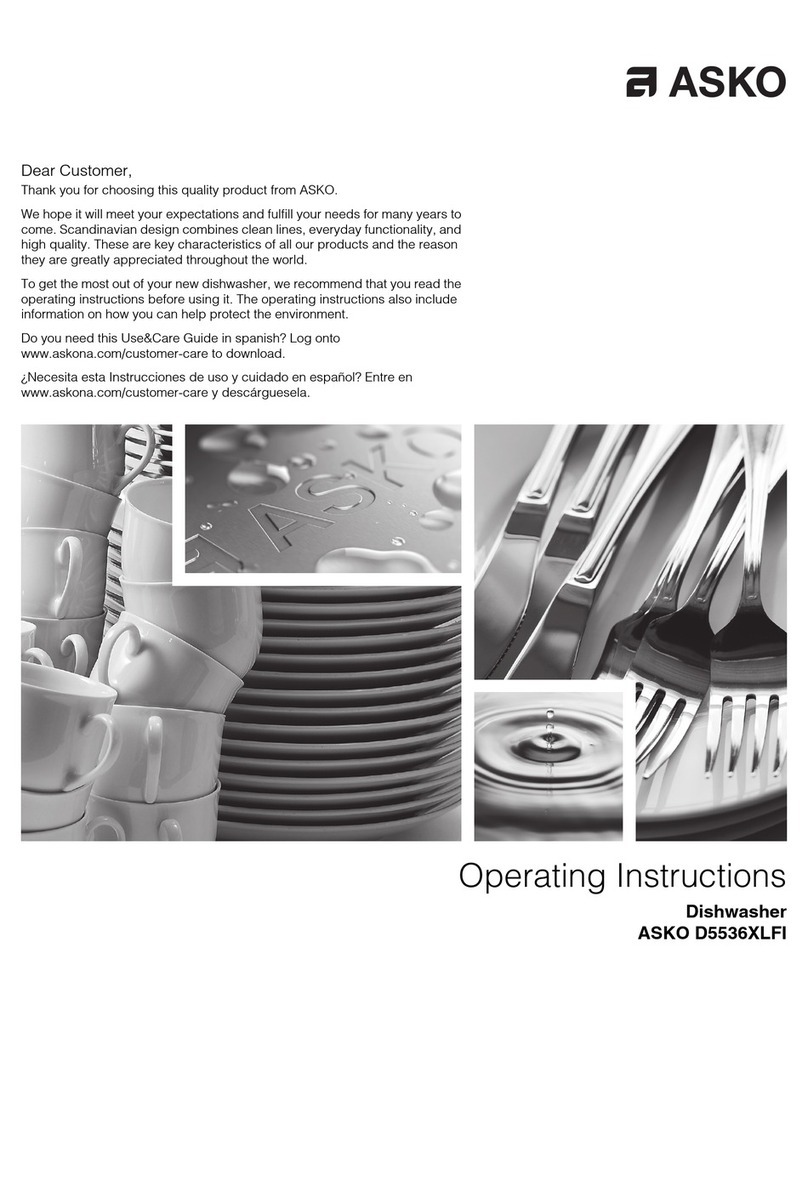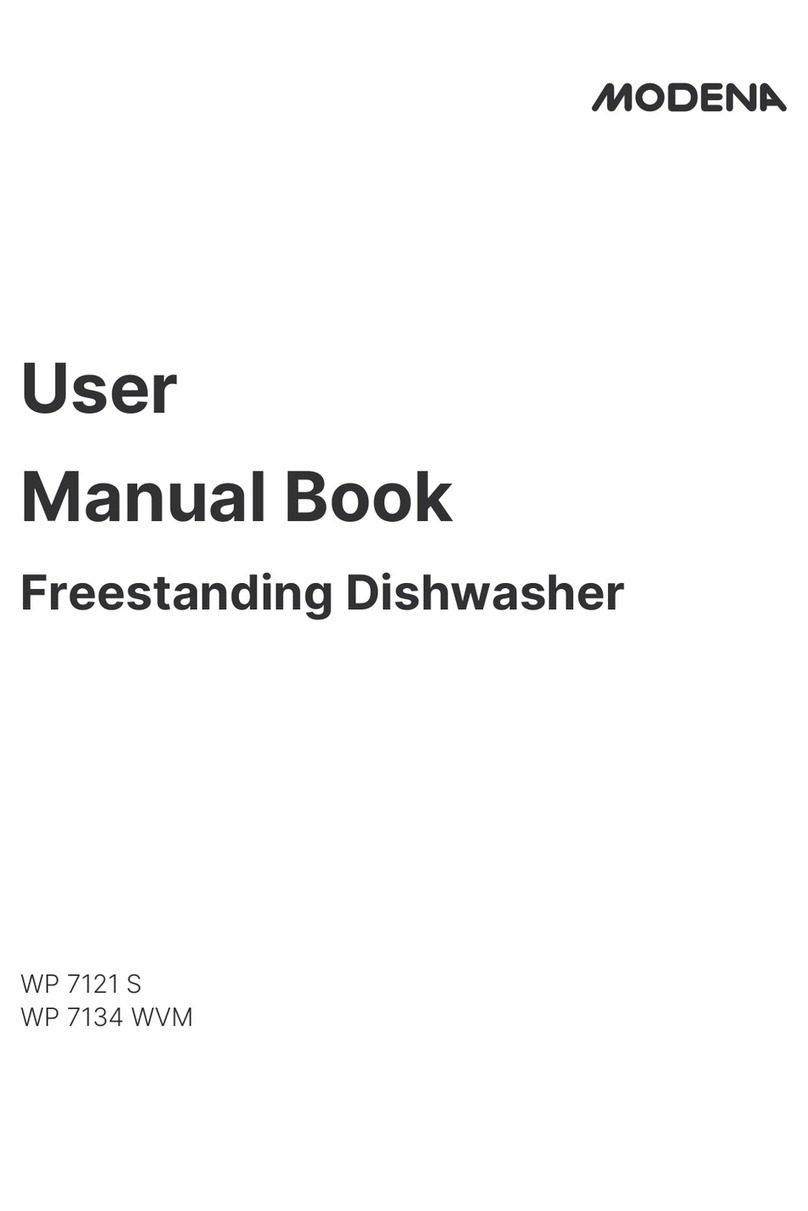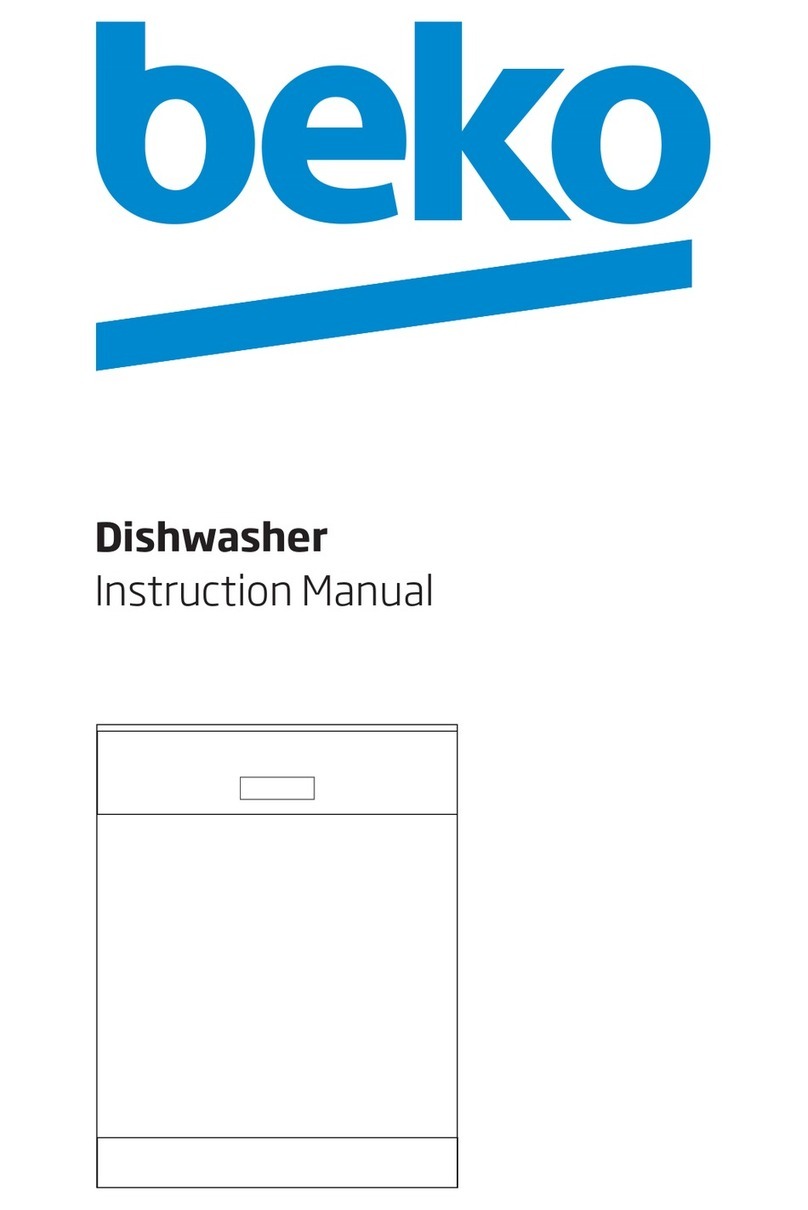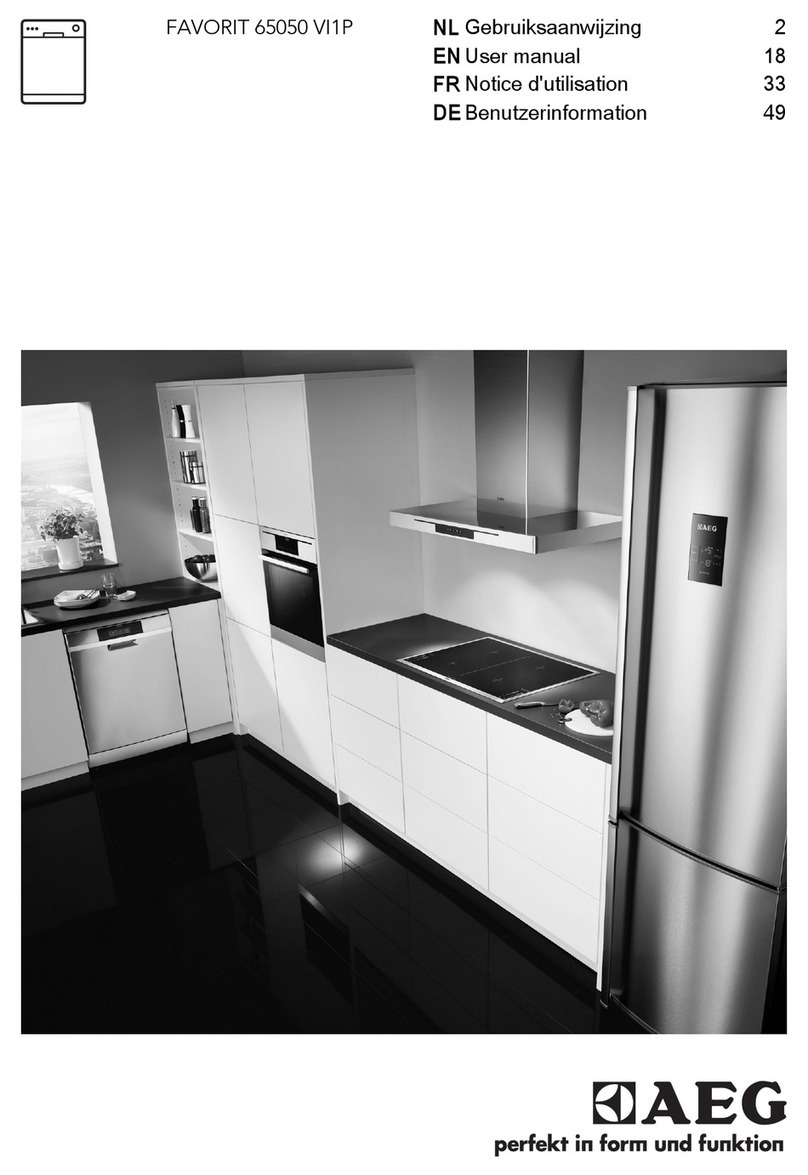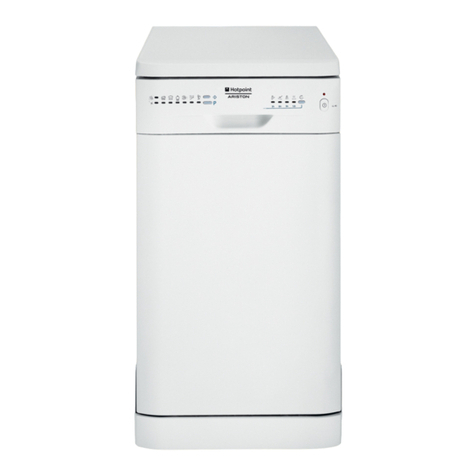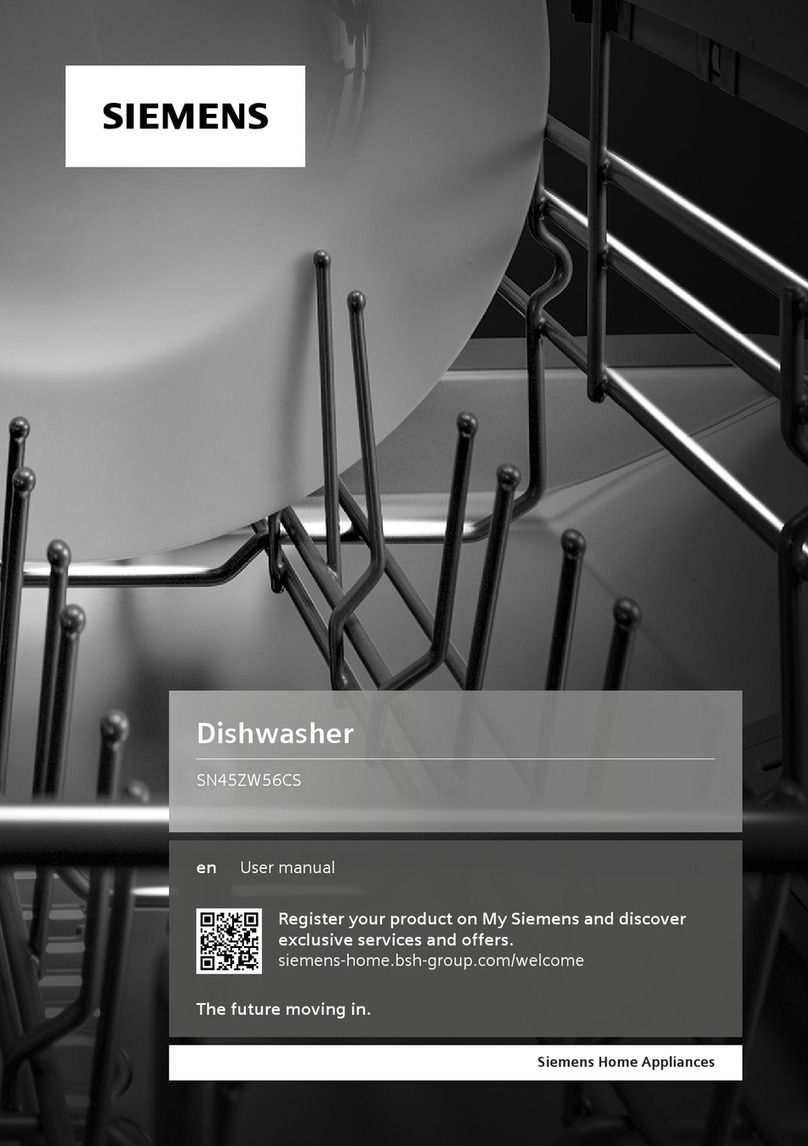Cad dishwashing starts
withHOI’water.
Toget dishescleanand dry,you
needhot water.Tohelpyou get
waterof thepropertemperature,
yourdishwasherautomatically
heatsthe waterin the washcycle.
Forgood washingand drying,the
enteringwatermust beat least
120”F.Topreventdish damage,
inletwater shouldnotexceed 150”F.
How to test water temperature:
Check the water temperature
insideyour dishwasher with a
candy or meat thermometer.
Let the dishwasher run throughone
fill and pump out cycle, then let
the dishwasher fill with water the
second time.
When you hear the water stop
filling, unlatch the door and slowly
Aopen it.
Measure the temperature of the
water in the bottom of the tub this
way:
Remove the silverware basket and
place acandy or meat thermometer
in the water towards the middle of
the tub. If the temperature is less
than 120”F,you will not get good
washing results. Higher water
temperature is needed to dissolve
grease and activate powder
detergents.
Helpful hints: If outside
temperatures are unusuallylow, or if
your water travels along distance
from water heater to dishwasher,
you may need to set your water
heater’s thermostat up. If you have
not used hot water for some time,
the water in the pipes will be cold.
Turn on the hot water faucet at the
sink and allow it to run untilthe
waterishot.Then startthe
dishwasher.If you’verecentlydone
laundryorrun hot waterfor
showers,giveyour waterheater
timeto recoverbeforeoperatingthe
dishwasher.
Toimprove washabilityif the
water is less than 120”Fand you
cannot adjustyour water heater:
Select alongercycle and fill both
detergentcups at leasthalf-full
with detergent.
HOwtOusearinseagent,.
Arinse agent makes water flow off
dishesquicker than usual. This
lessenswater spotting and makes
drying faster,too.
For best dishwashingperformance,
use of arinse agent such as JET-
DRY brand is recommended.
Rinse agents come in either liquid
or solid form. Yourdishwasher
uses the liquid form.
How to fill the rinse agent
dispenser. Unscrew the cap. Add
the liquid rinse agent until itjust
reaches the bottom of the lip inside
the dispenser opening. Replace the
cap. The dispenser automatically
releases the rinse agent into the
final rinse water.
If you accidentxdlyspill: Wipe up
the rinse agent with adamp cloth.
Don’tleave the spill in the
dishwasher. It can keep your
detergent from working.
H’you can’tfind any rinse agent,
write:
BENCKISER CONSUMER
PRODUCTS, INC.
(“JET-DRY”)
411 W. Putnam Ave.
Greenwich, CT 06830
How tochoose and time the o
right detergent.
First, use onlypowder or liquid a
detergentspecificallymade for
use in dishwashers.Other types
will cause oversudsing.
Second,check the phosphate
content. Phosphatehelpsprevent
hard-watermaterialsfromforming
spotsor film on your dishes.If
your water is hard (7 grainsor
more), yourdetergenthas to work
harder.Detergentswith ahigher
phosphatelevelwill probablywork
better.If the phosphatecontentis
low (8.7% or less),you’ll haveto
use extra detergentwith hard water.
Yourwater departmentcan telll
you how hard your wateris. So
can your county extensionagent.
Or your area’swater softener
company.Just call and ask them
how many “grains” of hardnessis
in your water.
How much detergentshouldyou
use? That depends.Is your water
“hard” or “soft”? Withhard water,
you need extra detergentto get
dishesclean. With soft water,you
need less detergent.
Too much detergentwith soft water
not only wastes money,it can be
harmful. It can cause apermanent
cloudinessof glassware, called
“etching.” An outsidelayer of
glass is etched away! But why take
achance when it’seasy to find out
the hardness of your water.
Keep your detergent fresh and
dry. Under the sink isn’tagood
place to store detergent.Too much
moisture. Don’tput powder
detergent into the dispenseruntil
you’re ready to wash dishes, either.
(Rwon’t be fresh OR dry.)
If ym.lrpowder detergent gets Okl.
or 111mPy9
thK’QWit away. Old
detergent often won’t dissolve. If
you use aliquid dishwasher
detergent, these precautions are not
necessary because liquid detergents
don’t “knp” as theyageorcome .;~+
incontactwithwater. Q
‘*F
6
